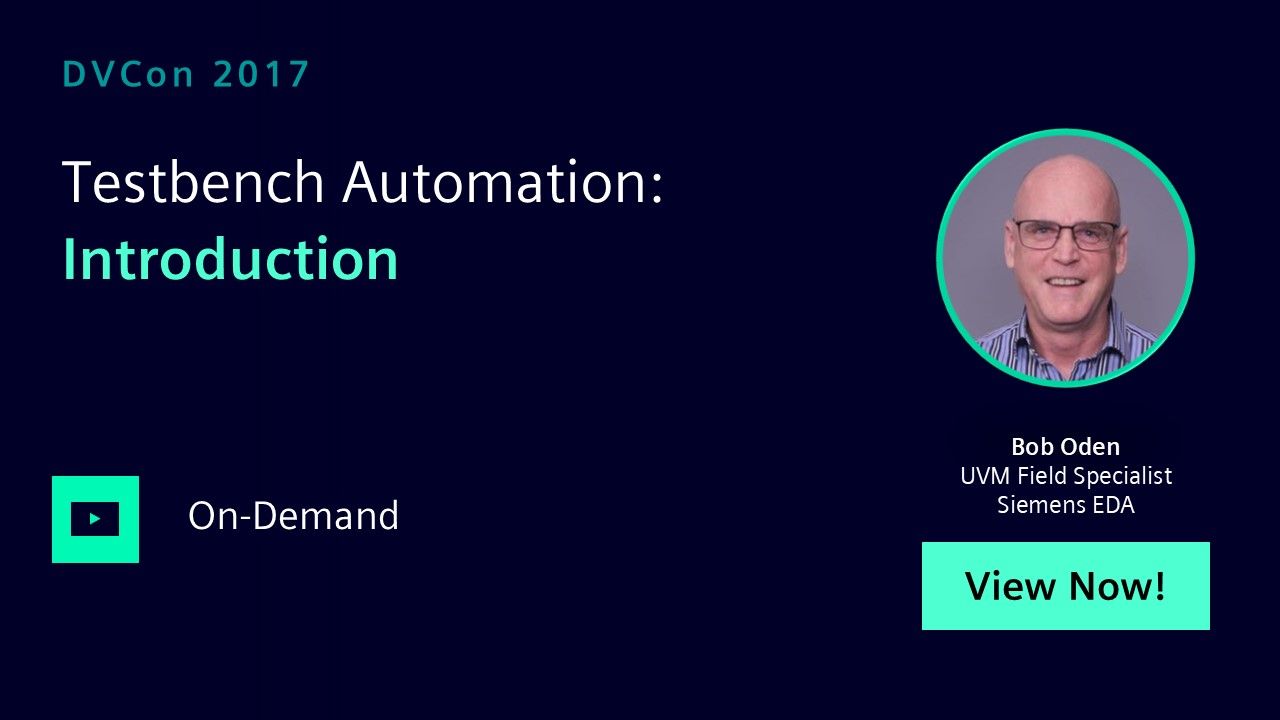Testbench Automation - Introduction
In this session, you will learn how to create a complex testbench that can be targeted at simulation or emulation in a couple of hours.

Full-access members only
Register your account to view Testbench Automation - Introduction
Full-access members gain access to our free tools and training, including our full library of articles, recorded sessions, seminars, papers, learning tracks, in-depth verification cookbooks, and more.